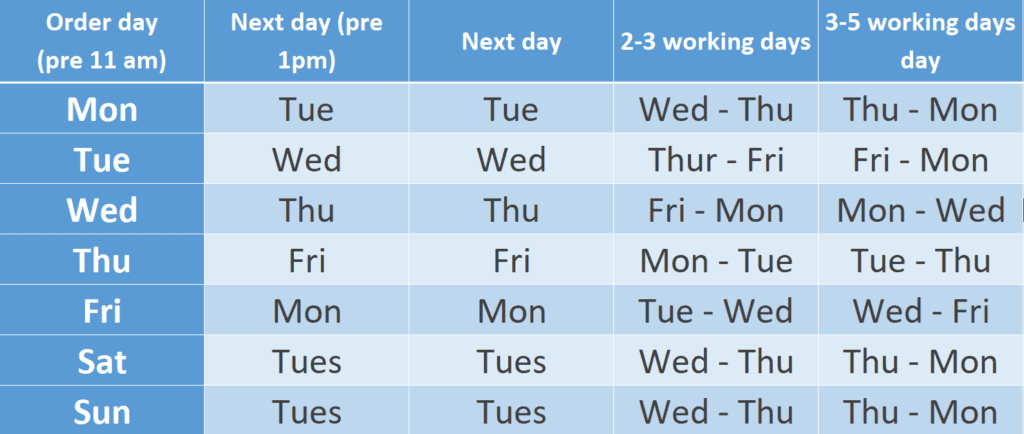A Guide to Floor Soundproofing
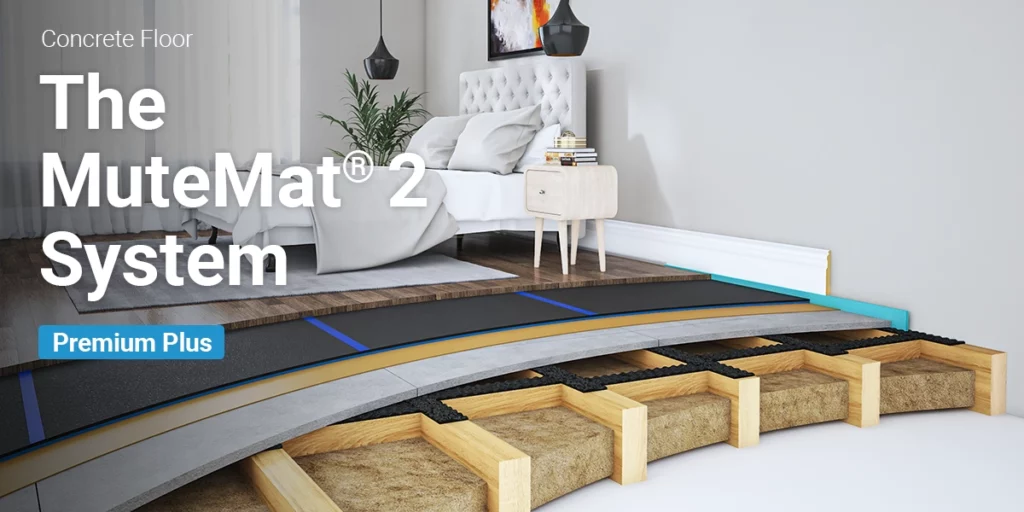
Introduction
In this guide, we will give you guidance on how to soundproof a floor. We want to make sure you feel comfortable with the terminology we use, and the best course of action to take with intrusive noise issues.
A brief explanation of sound
Before we look at floor soundproofing lets learn a little about sound. Sound is made up of a broad spectrum of frequencies which are created by vibrations; when you tap your foot, when you close the door, when you hum a tune – all of these create vibrations that result in the sound you hear and process.
Depending on the frequency of sound the lower the sound is in pitch, the more energy it contains and the more likely it is to travel in all directions and through a range of materials (this could be brick or block work for example)
We have provided a more in-depth description of sound in our ‘A Guide to Sound‘
If we take a 3-way speaker box for example (3 speakers, one above another), we can relate this to how we listen to music. We will help to put it into context with everyday sounds and instruments we may find in these areas and how problematic they can be acoustically
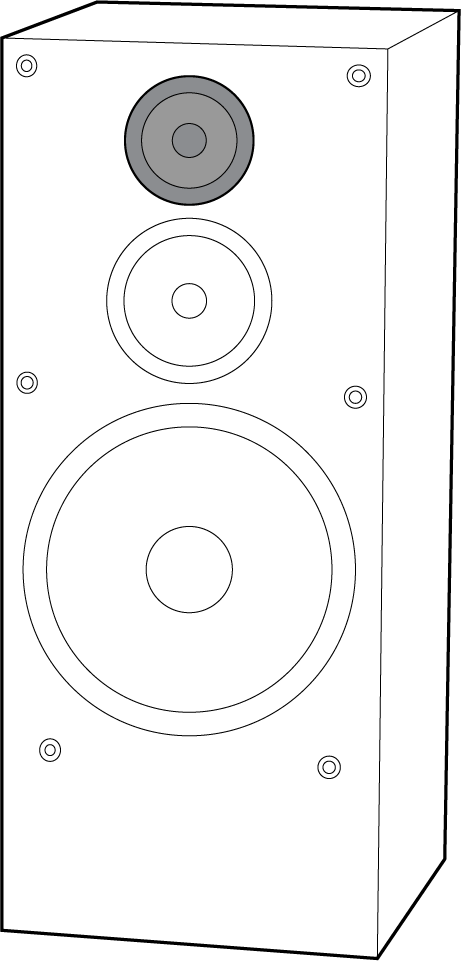
Tweeter (High Frequency)
This small domed speaker at the top reproduces high-frequency waves, high pitched in sound and is often at the top as most designers will aim to have it closer to head height. The reason for this is that the high-frequency noise is very directional (less likely to travel equally in all directions) because of the energy it contains, it doesn’t travel very far. If you put your speakers on and move into the next room, you will most likely hear that the higher-pitched noises are experienced far less than the lower frequencies.
This means that the energy we spoke about, will find it harder to move through dense materials, a brick wall or plasterboard for example.
- 4khz – 20khz (Kilohertz)
- Examples of high frequency;
- Voice (especially in sibilance which consists of the wooshing and hissing sounds of speech, say the line She Sells Sea Shells by the Sea Shore, lots of sibilance in this example)
- Drum cymbals, high end of guitar
- A micro-wave completion tone (the beeps once it has completed)
- Whistling
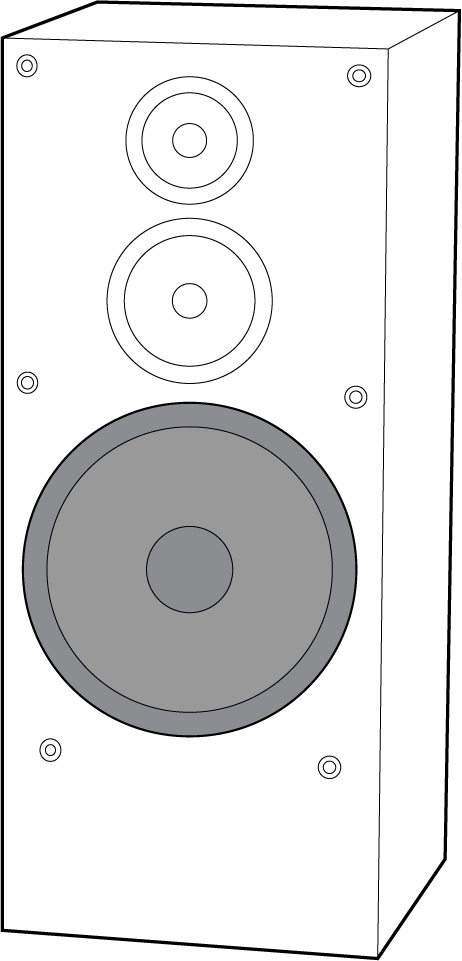
Bass (Low Frequency
This speaker you will notice as larger of the three, this is because it needs to move an incredible amount of air, which produces large wave-forms, and this results in an increased amount of sound energy which is omnidirectional, meaning that this sound will travel through a vast array of surfaces and materials, it can sound like it is coming from everywhere, which in most cases – it is.
An example of this would be hearing a party happening in the distance, you will always hear the thudding of a kick drum or a bass line.
- 20hz -250hz (Hertz)
- Examples of Low Frequency
- Kick drum
- Voice (this can be both male and female) creating muffled experience through a wall
- Impact noise (footsteps, doors closing)
- Cooker or microwave humming
- Washing machine or other appliances in operation
You will want to look at the next section as a way of surveying the noise and the path to tackling certain noise issues
How Floor soundproofing works
Floor soundproofing works through the physical properties of mass, spring/suspension and absorption, which means that the best acoustic system would have;
A heavyweight to reflect the sound (Mass)
An element of elasticity, spring or (Separation)
Absorption quality in all adjacent cavities (Absorption)
When reviewing floor soundproofing, it is important to note that noise issues are never completely blocked, the best reduction is when the noise issues reach a background noise level, this is as sound travels in multiple directions and through different parts of your building (see flanking below). You can find a more in-depth discussion on our Science of Soundproofing page, there is also a very handy dB graph here of different noise levels.
When looking at your floor soundproofing options, you will often see acoustic results which should always be displayed with an acoustic system in place. An acoustic system would always include the partition, this being a stud wall, brick wall, concrete wall and the acoustic soundproofing materials in place – you would not have testing results on an individual product.
One example we come across is direct acoustic matting options in the region of 45-50dB, please note that this will include the partition – where a dense floor boarding maybe in place or a test is carried out in a concrete structure. You will also want to take note if any acoustic ceiling systems have been put in place, as these can heavily influence results . We display wherever possible our breakdown of partitions in our performance data.
Another important note is that floor soundproofing materials and systems are relative to the logarithmic scale, which means adding the same system twice, measuring 10dB – would not result in 20dB overall.
A noise checklist
We want to make sure you have everything you need to progress on to the next stage, whether this is deciding to go ahead with the project, to ask iKoustic for a quotation or to place an order – we will help each step of the way.
- Listen to what noises you hear, is it conversation, TV, doors slamming or footsteps for example, or a combination of noises?
- Are noise issues one of the options below?
- Inaudible or background level, so when you are in your room, typical noises mask this noise issue.
- Muffled, you can make out there is certainly a noise – but you wouldn’t be able to tell what it is, or what words they are saying.
- Clear, you can tell what the noise is and hear words for example, clearly.
- Are some noises more problematic than others?
- Is there any Flanking noise? (See next section for a brief description or click on the word Flanking noise)
- Feel the surfaces, can you feel any vibration coming through?
- Take notes from anything you notice above, it will help visualise the issue
As sound is subjective, what may affect you more than others could be perhaps the slamming of a door, or a washing machine that seems to shake the whole house – but a conversation may not bother you.
Flanking Transmission
Another term you will regularly come across is Flanking (Sound, Transmission, Path) and what this essentially means is that in a wall construction, there will usually be multiple paths that the sound may travel through, below are some examples that could be in your home or workplace.
You can view this under our ‘A Guide to Flanking Transmission’.
We would recommend carrying out a small home test using an open end of a glass to every surface in the room and the base pressed against your ear whilst a sound is being conducted.
Helping to budget for your project
By budget, we are weighing up three variables that all directly have an impact on the efficiency of the floor soundproofing;
The cost
The space lost
The performance
As these all go hand in hand, our best performing floor soundproofing system is our MuteMat® 3 Plus for timber constructions, and our MuteCradle™ systems for concrete constructions. You can click on either option for more advice on the range.
You may want to take some time to talk with us about your options, having a budget in mind helps us point you in the right direction with coming up with the most effective solution for your budget.
What options do I have available?
We supply a full range of floor soundproofing options to help tailor to most budgets, we will break our options down below and give you a brief description.
About our Performance, Cost and Thickness below, it is marked on a scale of 1-10, 1 being the lowest, 10 being the highest. You can play around with the different options to see what works for you, all details such as; estimated reduction (with the best used environments) acoustic test results and space lost.
Option 1: MuteBarrier™ Systems
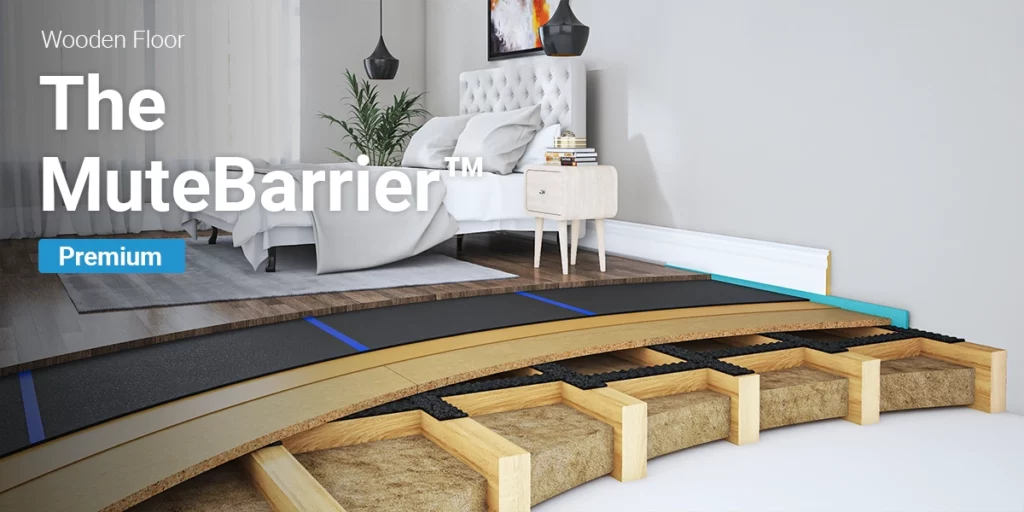
Performance Description
iKoustic’s MuteBarrier™ range is perfect for those looking to keep height loss to a minimum and looking for an upgrade of floor soundproofing to a weak timber floor. This range comes in a 5kg per meter square and a 10kg per meter square option (with the 10kg being better for airborne reduction), It is important to note, Mass Loaded Vinyl (which is what it is made from) will note reduce impact noise and does not reduce vibration.
- Reduction of background voices
- Reduction of light TV use
Option 2: MuteMat® OSF Systems
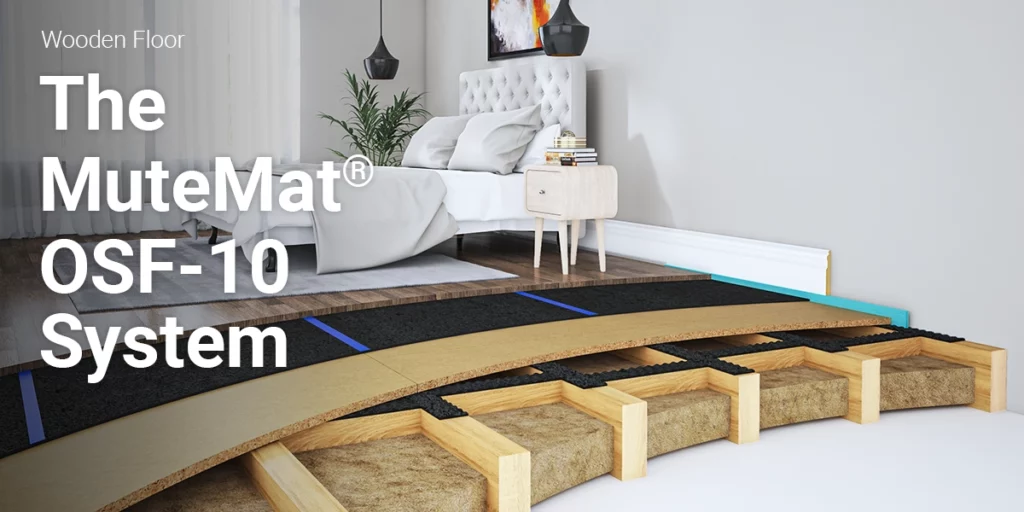
Performance Description
iKoustic’s MuteMat® OSF series is perfect for concrete buildings to reduce impact noise. It can receive almost any floor finish without additional ply or chipboard layering, helping to reduce both material and labour costs. Suitable for use with underfloor heating and robust for daily usage.
- Reducing footfall in concrete structures
- Reduce vibration in concrete structures for use with appliances
Option 3: MuteMat® Systems
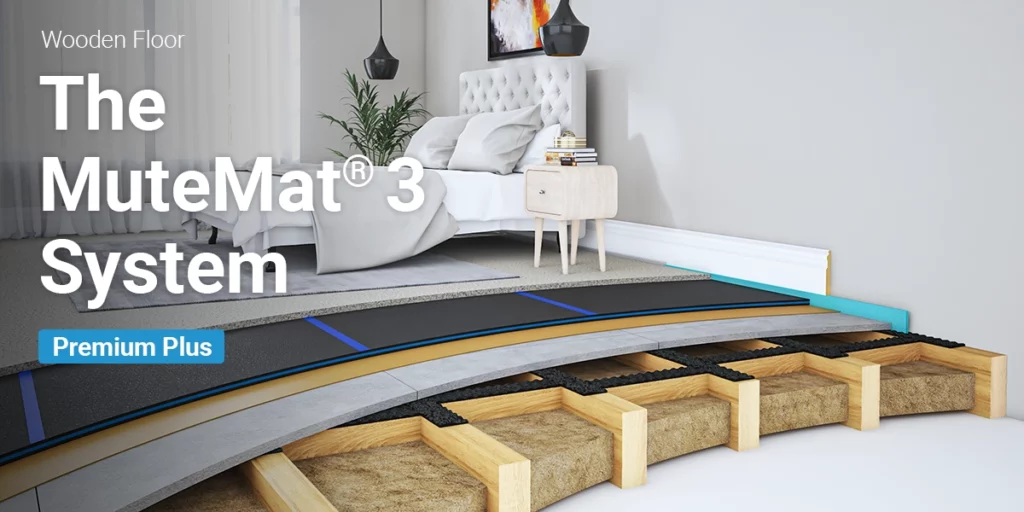
Performance Description
iKoustic’s MuteMat® series is our most popular floor soundproofing product for reducing both impact and airborne noise in timber and concrete constructions. Concrete constructions would most commonly see a dramatic improvement for impact noise and would require combining with a batten system for airborne reduction in concrete. It uses a close-cell foam, which means it has a consistent build and resistant to water, mould and other elements that cause damage around this area unlike it’s chipfoam competitors.
- Reducing conversations
- Reducing TV and light music noise
- Reducing footfall issues
- Use under kitchen appliances to reduce vibration
Option 4: MuteCradle™ Systems
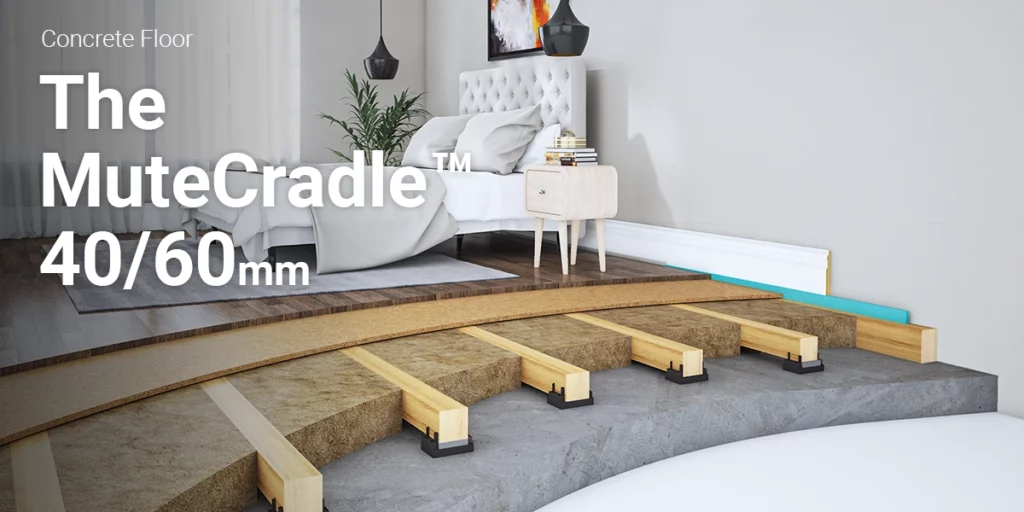
Performance Description
iKoustic’s MuteCradle™ range is a great way to provide separation from a concrete or timber construction, which is an important part of gaining the best floor soundproofing possible. It also allows servicing in concrete constructions to run underneath and allowing acoustic mineral wool to be placed between the timber work. As a floor finish, you can also upgrade acoustic performance with our MuteDeck™ and MuteMat® 2 and MuteMat® 3 for reducing airborne and impact reduction.
- Reducing footfall and structural vibration (washing machines for example)
- Reducing neighbour noise, conversation, television and music
- Can be used in home studio environments
- Can be used in home cinemas
- To level floors in uneven concrete flooring
What we do for you
Where to now?
You have made it this far, do get in contact with us we would love to hear from you and how we can help.
To help us, you will want to gather;
- Any plans you may have had of the build
- Dimensions of the floor
- We would need a perimeter reading of each room to calculate perimeter materials
- Any images, this can help us detect any more potential issues
Frequently asked questions
Still have questions?
If you cannot find an answer to your question in our FAQ, you can always contact us
and we will be with you shortly.

